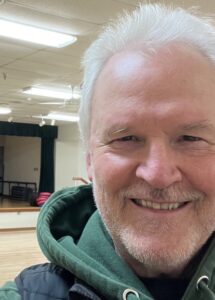How can you influence yourself without thinking the influencer is clueless?
I don’t like being told what to do, but that’s where we all start.
“Put your things away. Clean up after yourself. Show some respect.”
Who hasn’t heard that as a child? Who hasn’t said it to a child?
From appearances, not everyone was listening then. Or now.
Results vary at each step. For example:
Hearing “Put your things away” as a child meant keeping track of toys and their parts so you didn’t end up with half a toy ten minutes in.
Or it’s learning how to fold clothes and put them in a dresser.
Both instances are 100% useful later in life to avoid questions like,”Has anyone seen my small socket set,” and, “Where is my other sock?”
You might find a small socket taped into a waterfall bottle cap with a hole drilled near the bottle base. The sock is hiding inside a high-tech fabric workout shirt with help from static electricity.
Put your things away isn’t the same as “get that crap out of sight.”
That misinterpretation is the market driver growing the mini-storage industry over the baby boomer life span.
A mini-storage unit is the perfect antidote for hoarder clutter, the stuff we can’t live without. But it’s not solving any problems, it’s transferring problems by kicking them down the road.
Eventually that stuff needs a reckoning, but who is going to do it? This is a link to lifehacks.org.
Out Of Sight Out Of Mind?
Just because you can’t see something doesn’t mean it’s not there. Like the Covid-19 virus, there’s always evidence, proof, for the curious.
It comes in the form of one shopping question: “Do I need this?”
Since it’s a question and not, “Yes, finally, I need this,” you’ve probably got several of the same thing hiding in the pile of debris you plan to sort through ‘one of these days.’
If you’ve helped older people move from their lifetime home to a downsized version, then you’ve seen this played out:
Ten pairs of half-lens reading glasses under the bed after falling through the crack between headboard and the mattress where they spent two decades reading themselves to sleep.
Three pairs of new shoes still in the box that match four worn pairs of the same.
A closet full of toilet paper, “enough to last a lifetime,” said with pride when you ask why.
What you need to ask, what I continually ask myself, is how much is too much?
It’s a question that scream “PRIVILEGE” loud and clear in a world of wants and needs.
INFLUENCE YOURSELF FOR A GOOD ANSWER
“People like what they like and can’t seem to get enough,” is one answer to how much.
The woman covered in tattoos explains why they need one more bit of ink “to pull my theme together.”
A man with seven cargo containers arranged around his property says, “When the time comes to go, I’m packed and ready.”
Ask yourself what you like, what you can’t life without? Are you satisfied that you’ve got enough of whatever that might be?
Toy train people never have enough; tea towel people never have enough; shoe people never have enough.
Those are small things, at least smaller than car collections, toaster collections, and telephone collections. If you have an obsession about one thing, and it all fits into one drawer, is it problem?
Influence yourself with a reminder of scale. An over-abundance of stuff is still a load whether it fits in a drawer, a five story garage, or a warehouse.
Museum pros have the advantage of a classification protocol for new acquisitions. It’s either a Category One artifact, Category Two, or Category Three.
C1 is the best of the best. These objects may be better examples than what is already in the Permanent Collection.
C2 is above average. C3 is more related to a garage sale or thrift store, than a museum. It’s also called The Study Collection.
Adopt The Museum Method For Your Stuff
Museums are packed with two types of material on exhibit: A unique object that stands alone to represent a time and place.
And ordinary things owned or used by extraordinary people, famous people, like the ax George Washington used to chop the cherry tree. Allegedly.
What are your treasures?
Mine include a sword and bayonet from my dad, along with my grandpa’s railroad pocket watch, which are all destined to the kids.
Influence yourself by putting things aside for others. Most of my good stuff is hung in out of the way places because my wife seems to think pictures of her husband shouldn’t cover every square inch of wall space.
We don’t agree on everything. If I was in charge of home decor, my autographed pictures of the Cowboy’s Roger Staubach and Raider coach Tom Flores would be front and center along with podium pics of yours truly and the boys.
But that’s not the sort of house the wife and I agree on. And we agree enough that I have them all hanging where I can see them from my desk.
Start with unique possessions. Are they valuable enough to warrant a safe deposit box, wall space, fireplace mantle space, or their own trophy case?
Move to the stuff called keepsakes that remind you of the people you love. That’s not going anywhere.
Make a list, then take a rest. The chance to influence yourself comes when you start recycling everything but the unique things and keepsakes.
Are you up to it? If not you, then who? If not now, when?
Don’t worry, you’ve got this. Darwin guarantees it one way or the other.



